Electricity powers almost every aspect of our daily lives, but it also comes with inherent dangers that can lead to serious injuries, fires, or even fatalities if not handled correctly. To ensure safety in workplaces, public spaces, and industrial settings, electrical warning signs play a crucial role in alerting individuals to potential hazards.
Understanding these signs and their meanings can help prevent accidents, ensure compliance with safety regulations, and protect both workers and the general public. Whether you’re in construction, manufacturing, or simply working around electrical equipment, recognizing these signs is essential for maintaining a safe environment.
In this guide, we’ll explore 25 common electrical signs, where they are typically found, and why they are important. By familiarizing yourself with these warnings, you can take the necessary precautions and stay safe when working with or around electricity.
25 Common Electrical Signs and Their Meanings
Understanding electrical safety signs is crucial for preventing accidents and ensuring a safe environment when working with or around electrical systems. Let’s discuss 25 common electrical signs, their meanings, typical usage locations, and their importance:
1. Danger: High Voltage Sign
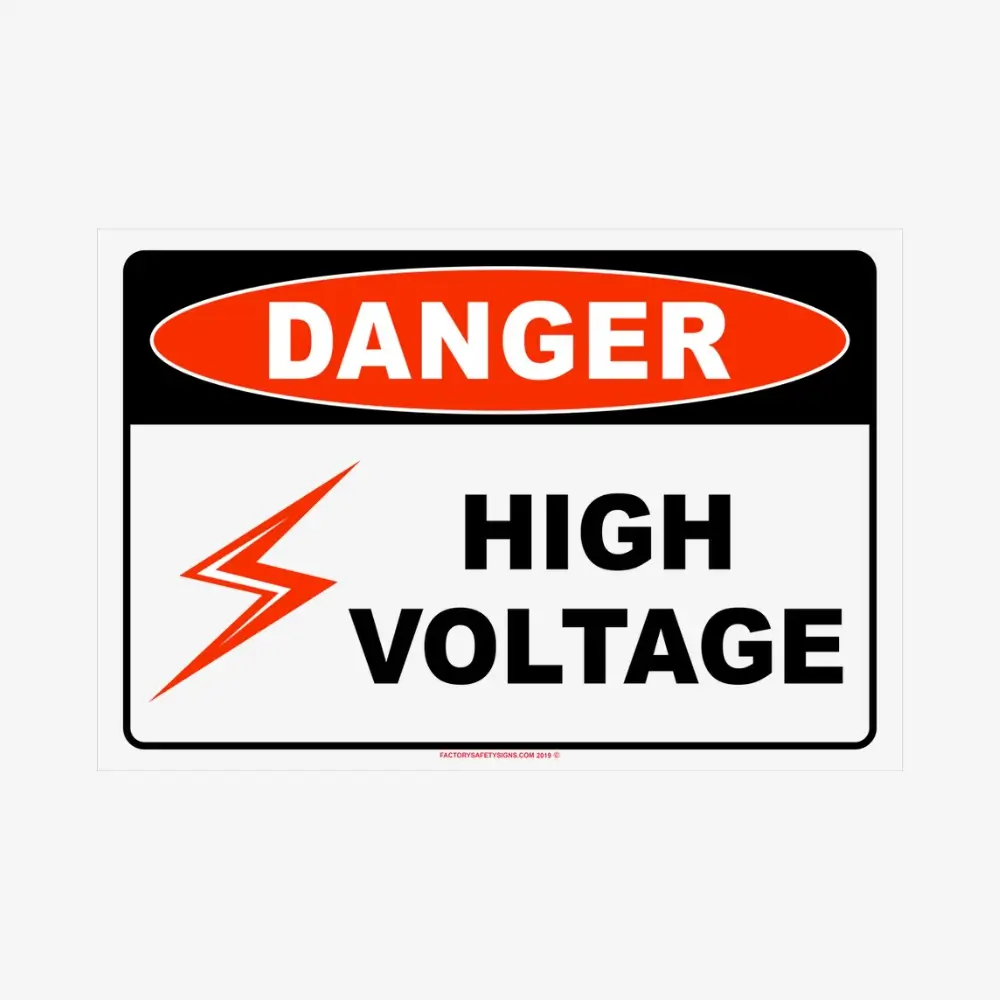
This sign warns about areas where high voltage electricity is present, posing a risk of severe electric shock or death.
- Where It’s Used: Found in places such as substations, power plants, high-voltage transmission lines, and transformer enclosures.
- Importance: Contact with high voltage can cause instant electrocution. The sign ensures workers and the public are aware of the hazard and maintain a safe distance.
2. Danger: Electrical Hazard Sign
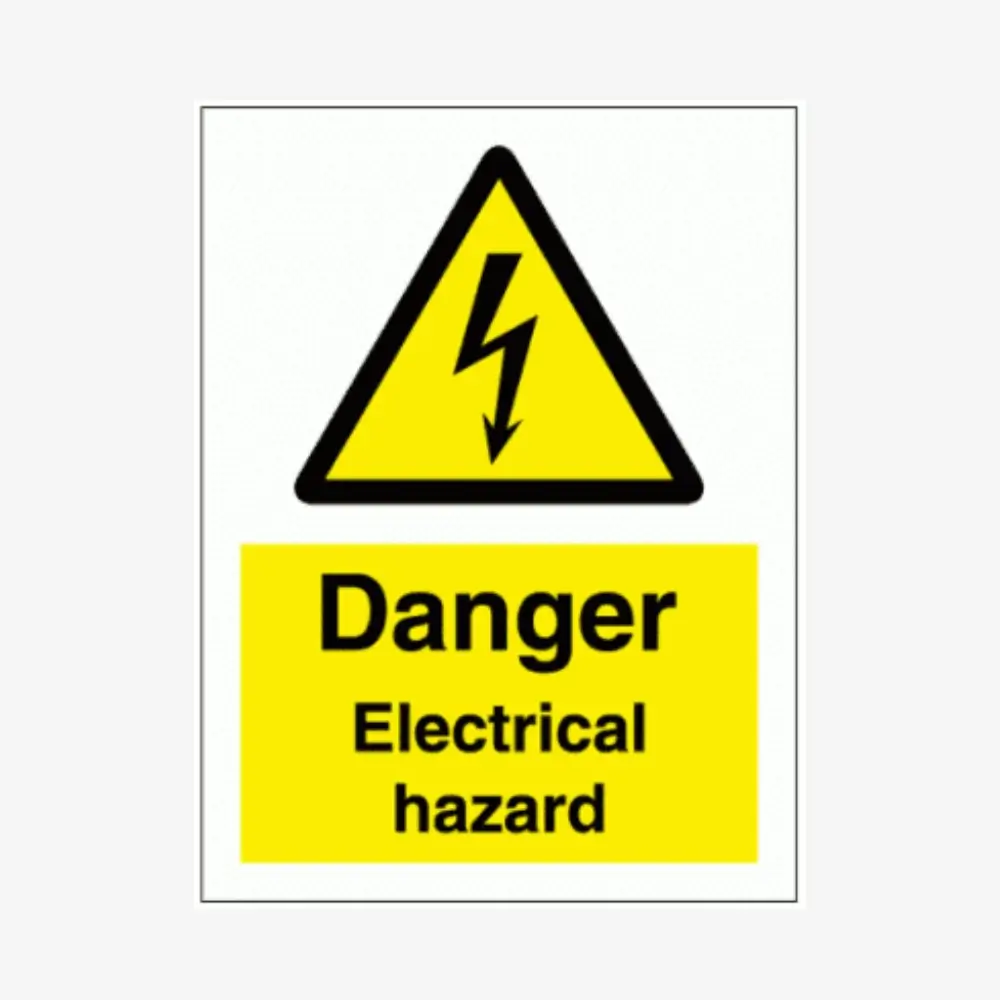
Indicates a serious risk of electrical shock, burns, or electrocution. This sign serves as a warning for areas with exposed live parts or high-energy electrical systems.
- Where It’s Used: Seen near electrical control panels, breaker rooms, industrial machinery, and places where workers interact with live circuits.
- Importance: Encourages individuals to use proper safety equipment (such as insulated gloves) and follow protocols to avoid severe injuries.
3. Caution: Live Wires Sign
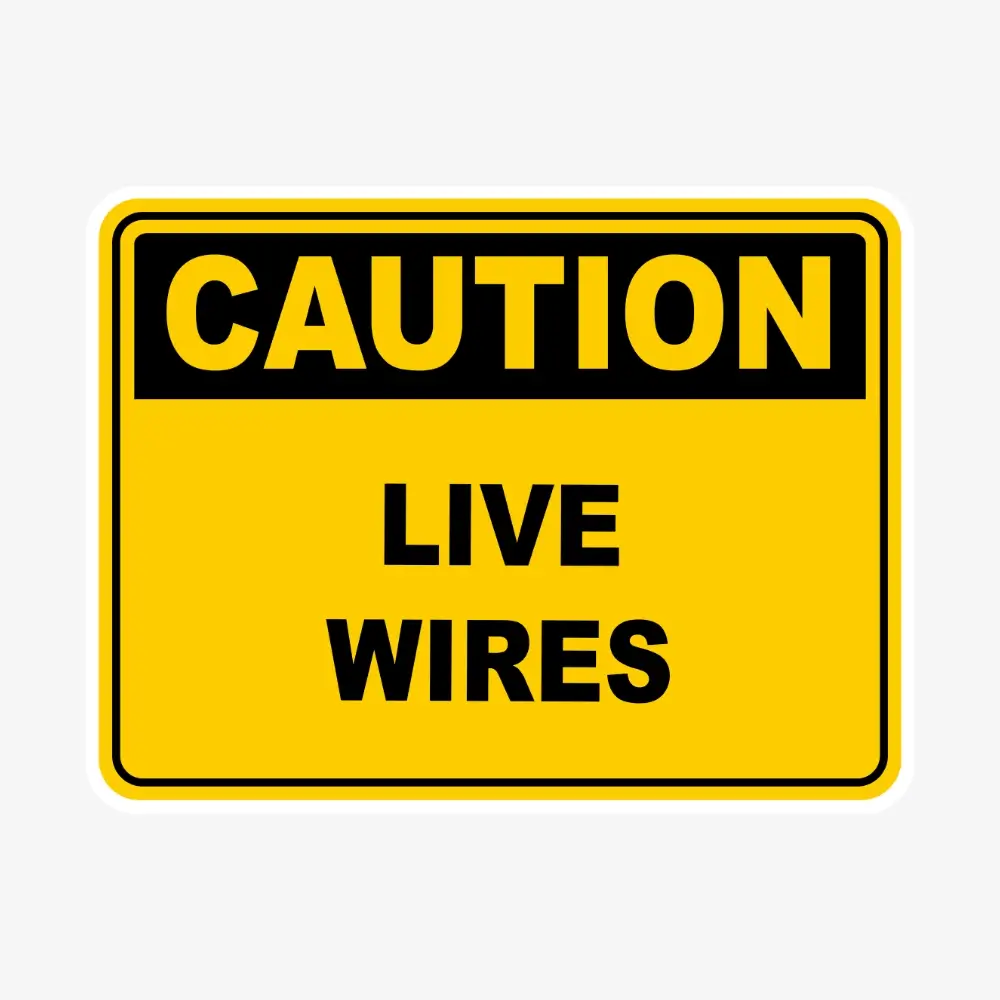
Alerts people to the presence of exposed, live electrical wires that can cause electric shock upon contact.
- Where It’s Used: Found at construction sites, utility maintenance areas, and locations where electrical installations are underway.
- Importance: Prevents accidental contact with live wires, which could result in severe injury or death.
4. Caution: Arc Flash Hazard Sign
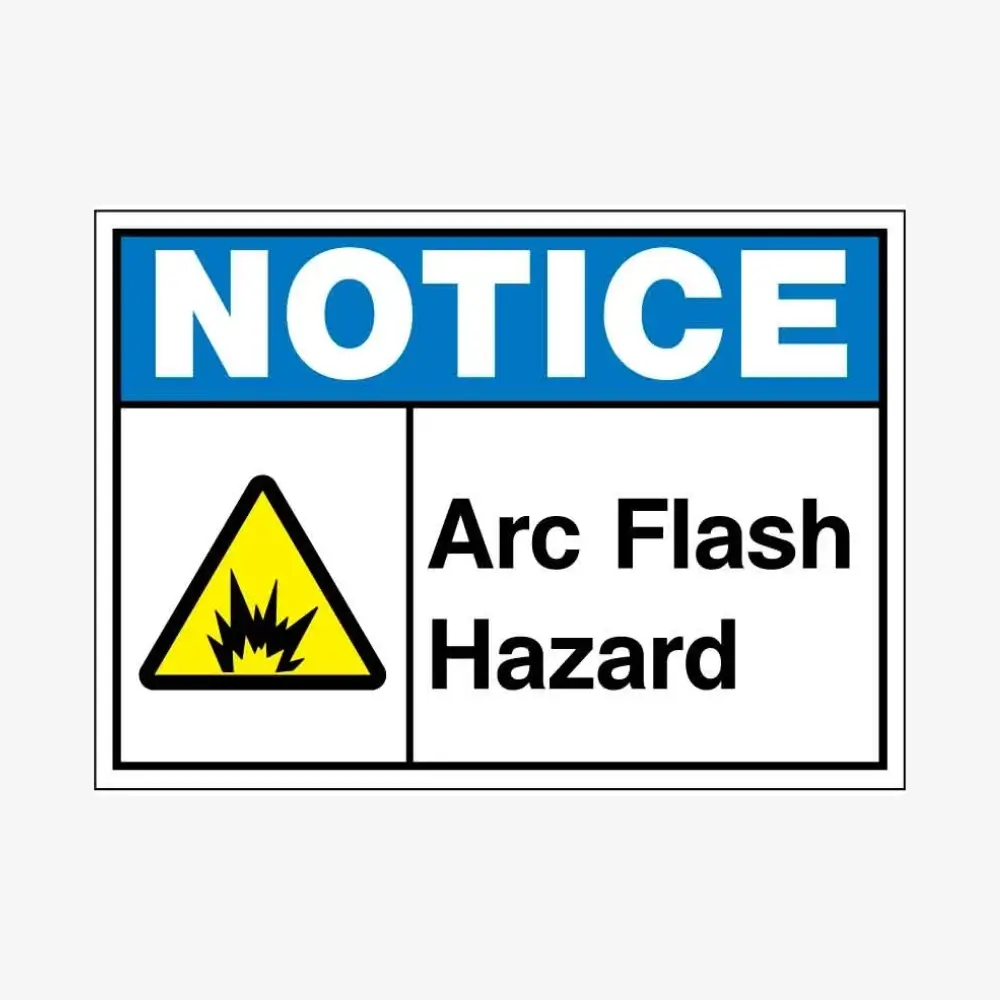
Warns of potential arc flash hazards—sudden releases of electrical energy that cause explosions, high heat, and intense light.
- Where It’s Used: Found near switchgear, electrical cabinets, and industrial electrical panels.
- Importance: Arc flashes can cause third-degree burns, blindness, or death. The sign reminds workers to wear arc-rated clothing, face shields, gloves, and other PPE before interacting with high-voltage equipment.
5. Caution: Electrical Shock Hazard Sign
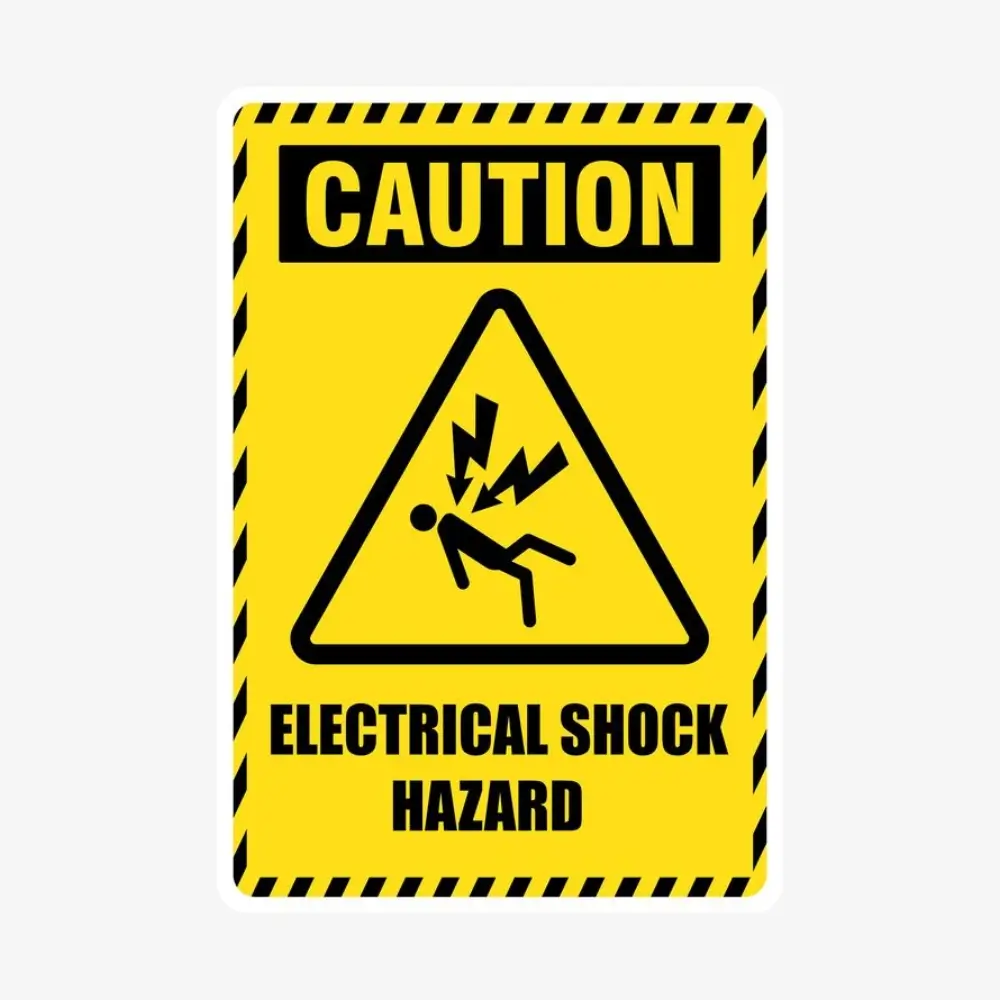
Indicates that an area or equipment presents a risk of electrical shock, urging individuals to exercise caution.
- Where It’s Used: Seen on electrical boxes, circuit breakers, and areas where exposed conductors are present.
- Importance: Helps prevent accidental shocks by reminding workers to turn off power sources and use insulated tools.
6. Electrical Room: Authorized Personnel Only Sign
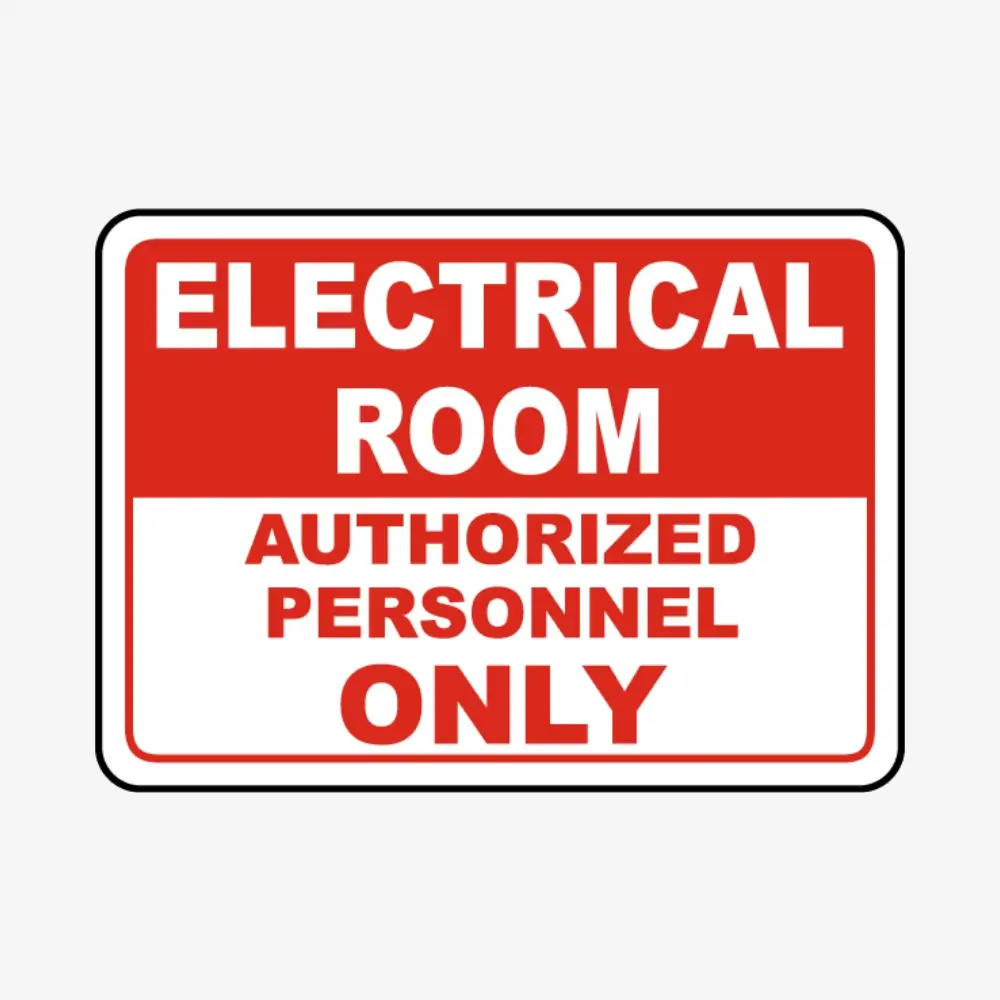
Restricts access to rooms where electrical control panels, breakers, or transformers are housed to authorized, trained personnel only.
- Where It’s Used: Found in commercial buildings, industrial sites, and utility stations where electrical panels and control equipment are located.
- Importance: Ensures that only qualified individuals can access electrical rooms, reducing the risk of accidental exposure to high voltage.
7. Authorized Personnel Only Sign
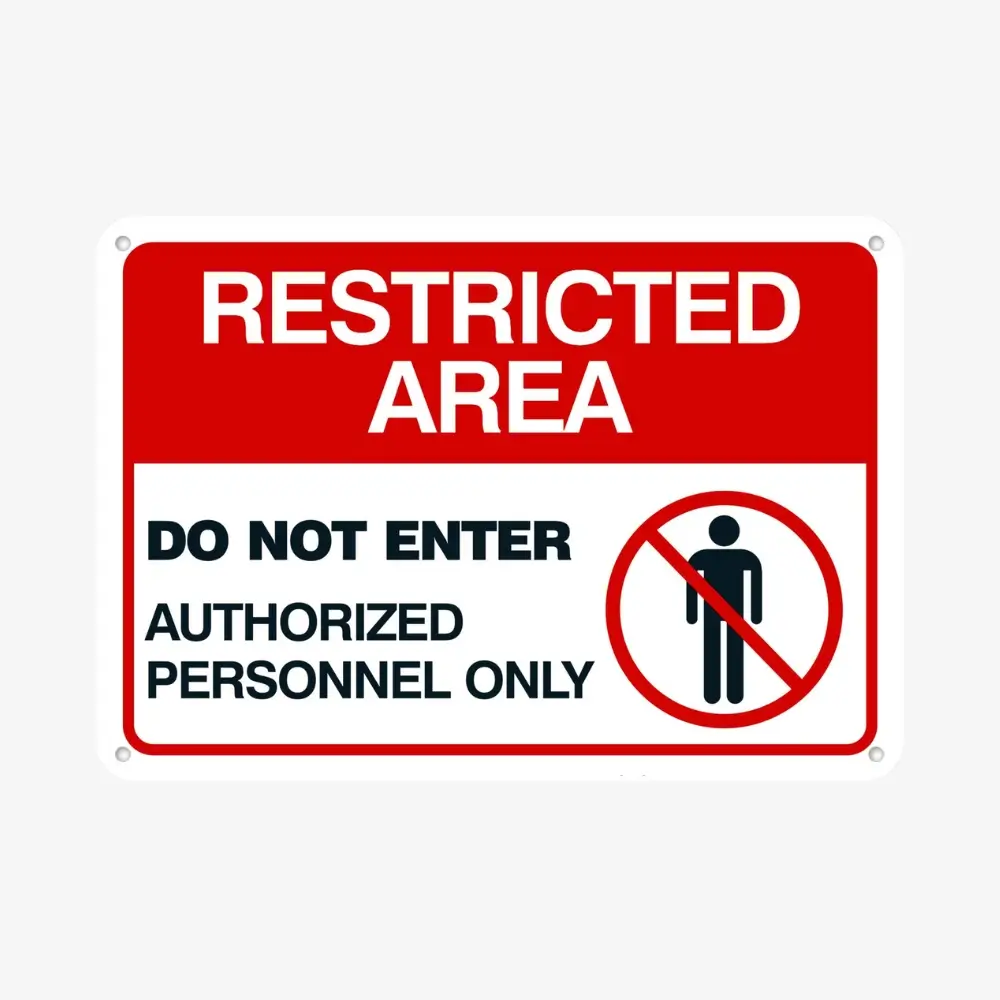
Indicates that only individuals with proper authorization and training are allowed in the designated area.
- Where It’s Used: Applied in electrical hazard areas, power plants, and maintenance zones.
- Importance: Prevents untrained personnel from entering hazardous environments where electrical risks are present.
8. Disconnect Before Servicing Sign
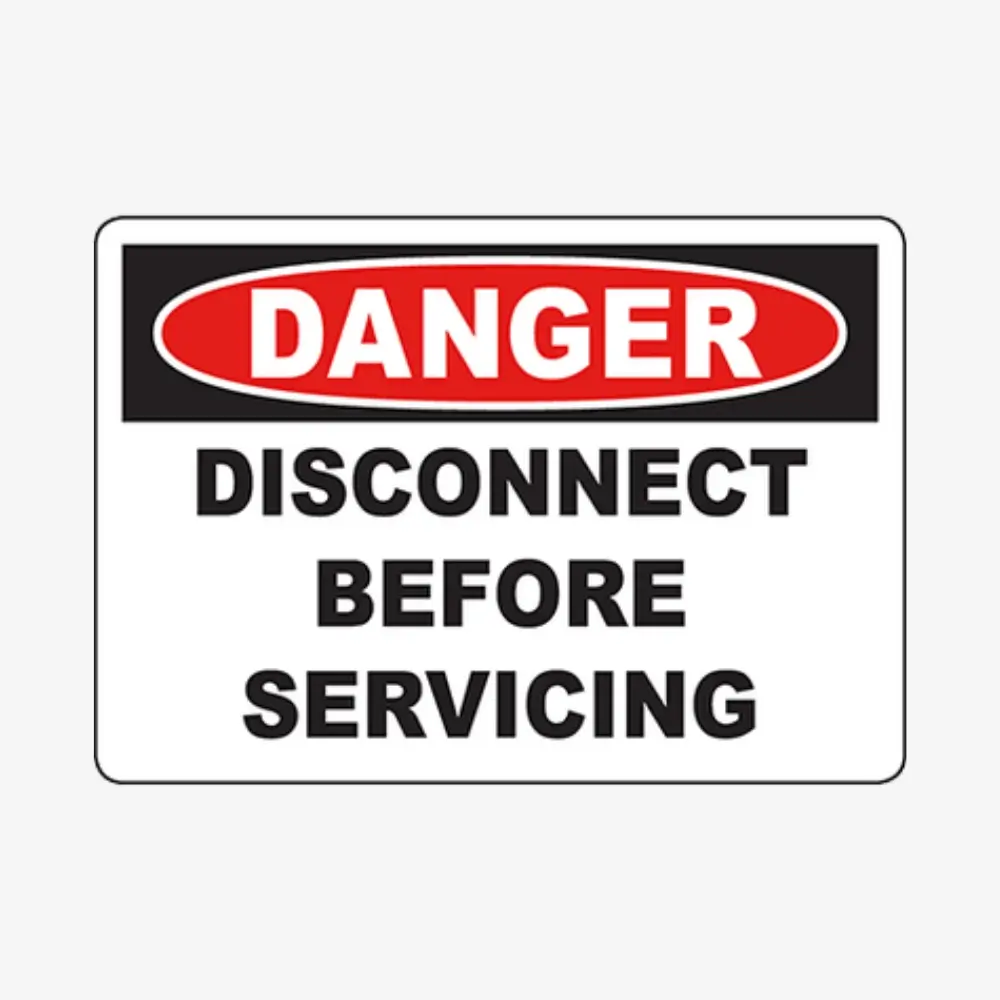
Instructs workers to turn off and disconnect power before performing any maintenance or servicing on electrical equipment.
- Where It’s Used: Placed on machinery, control panels, and electrical enclosures that require servicing.
- Importance: Prevents accidental electrocution and equipment activation while maintenance is being performed.
9. Lockout/Tagout Required Before Entering Sign
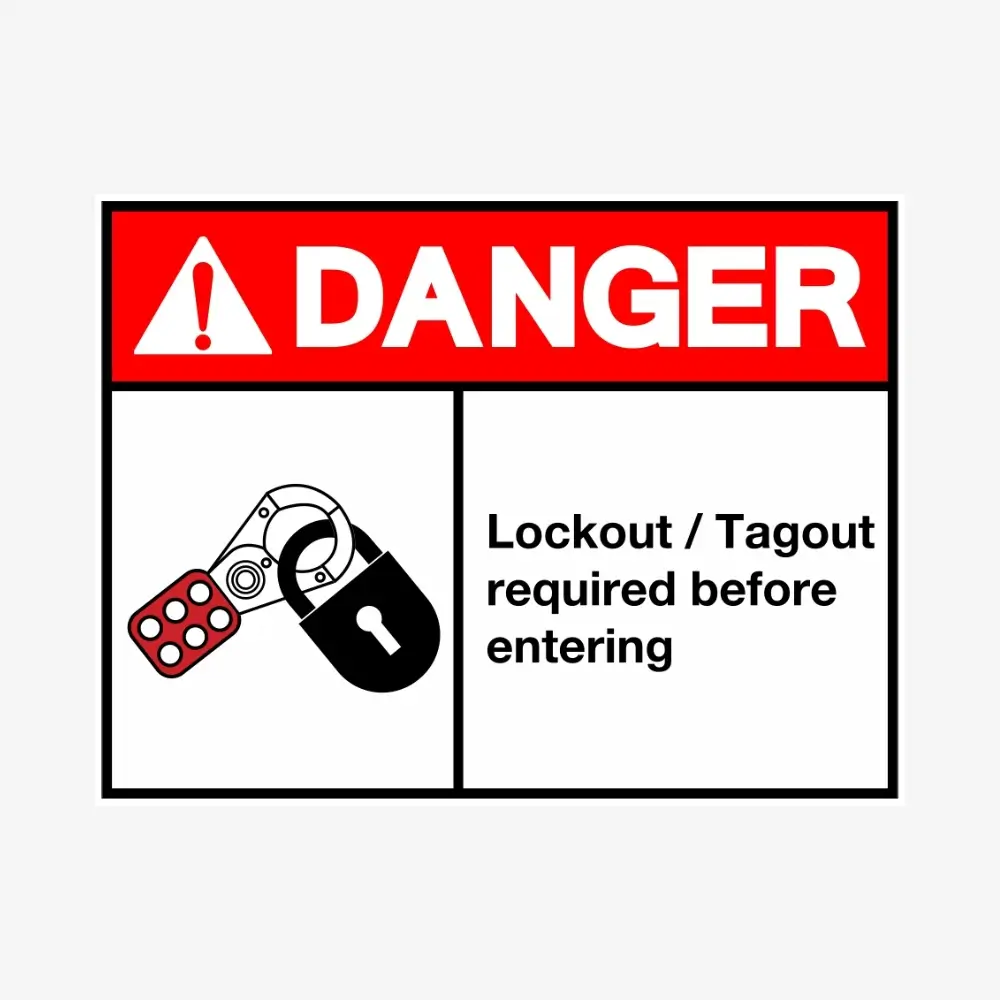
This sign instructs workers to follow Lockout/Tagout (LOTO) procedures before entering or servicing equipment. Lockout/Tagout involves using special locks and tags to de-energize machinery and prevent accidental startup.
- Where It’s Used: Found on electrical panels, industrial machines, and control stations where maintenance is performed.
- Importance: Prevents serious injuries or fatalities caused by unexpected electrical energy release while servicing machinery.
10. No Pacemakers Sign
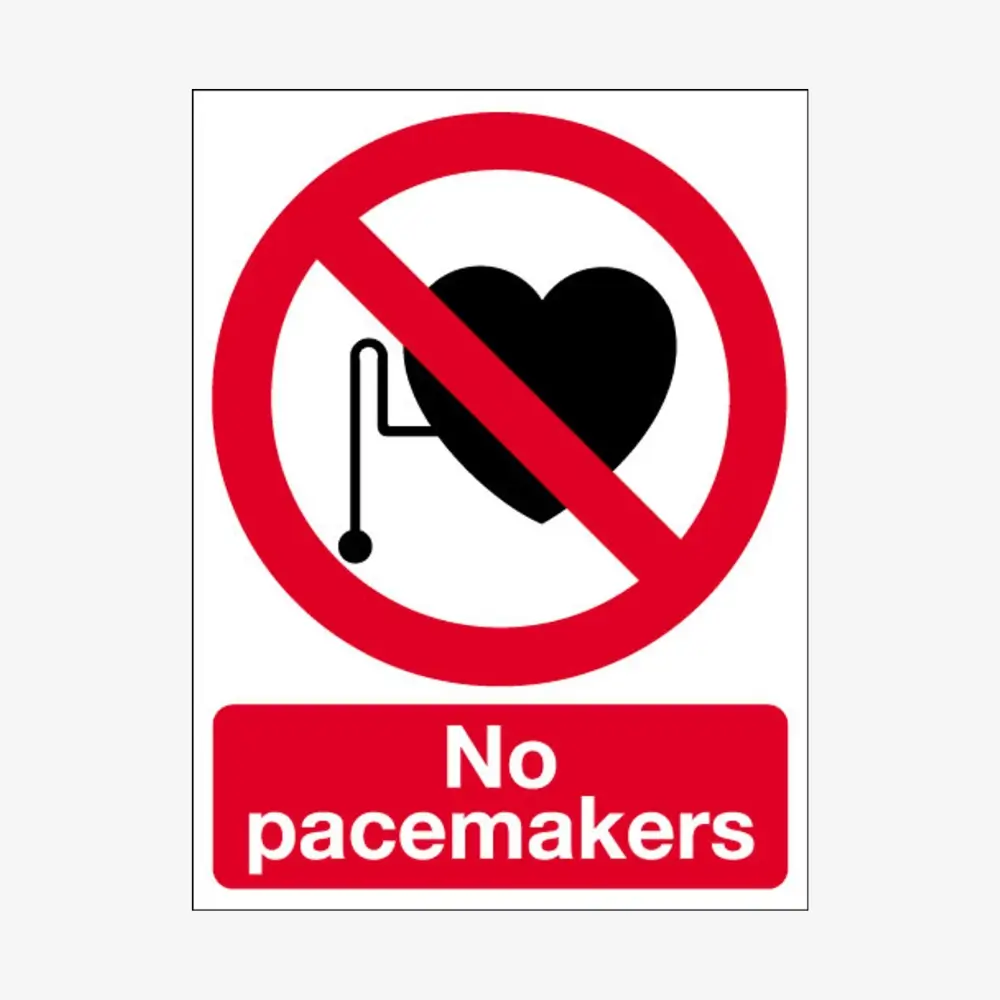
Warns individuals with pacemakers or implanted medical devices to stay away from areas where electromagnetic interference (EMI) is present. Strong electromagnetic fields can disrupt pacemakers, causing severe health complications.
- Where It’s Used: Found near high-voltage transformers, radio towers, MRI rooms, welding equipment, and industrial electrical installations.
- Importance: Protects individuals with heart implants from possible malfunction due to electromagnetic interference.
11. Emergency Shut-Off Switch Sign
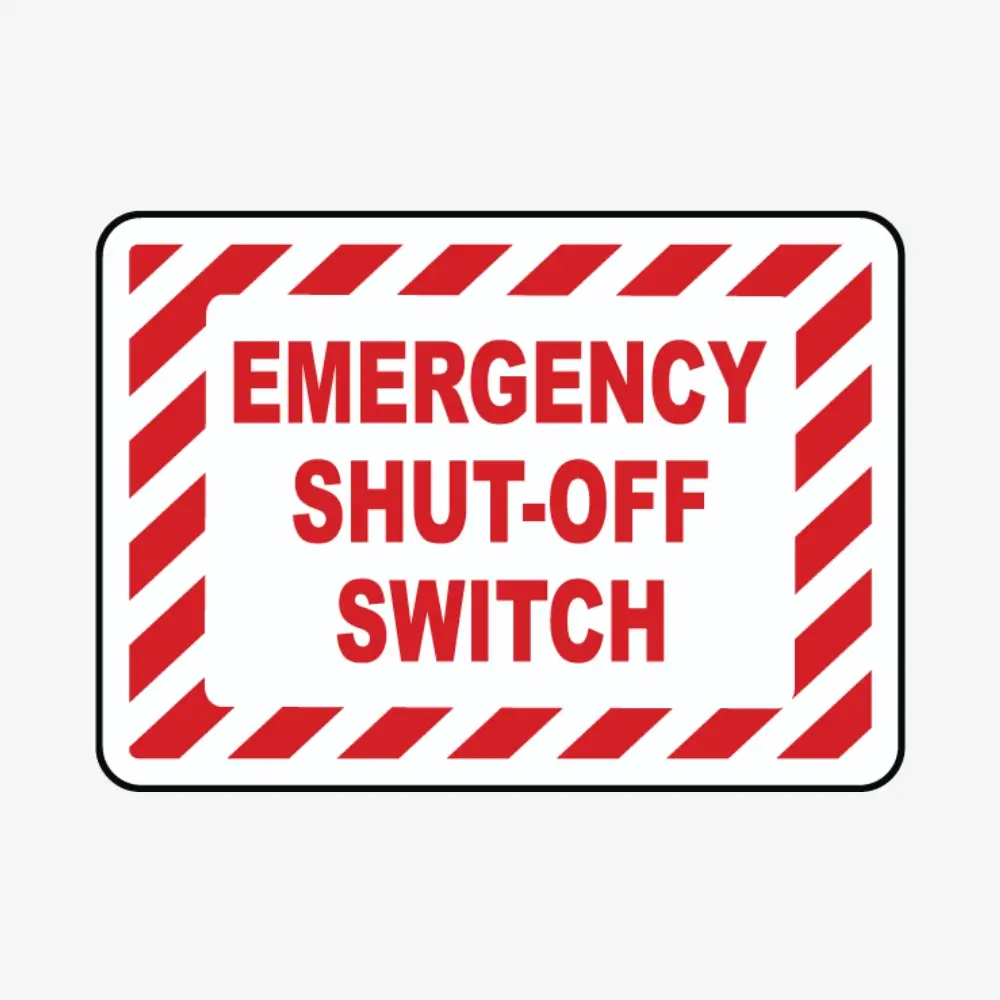
Indicates the location of an emergency shut-off switch, used to quickly cut power in hazardous situations, such as electrical fires or equipment malfunctions.
- Where It’s Used: Common in factories, power plants, laboratories, and workplaces with high-powered electrical machinery.
- Importance: Helps personnel respond quickly to emergencies, minimizing injury risks and damage.
12. Electrical Panel Sign
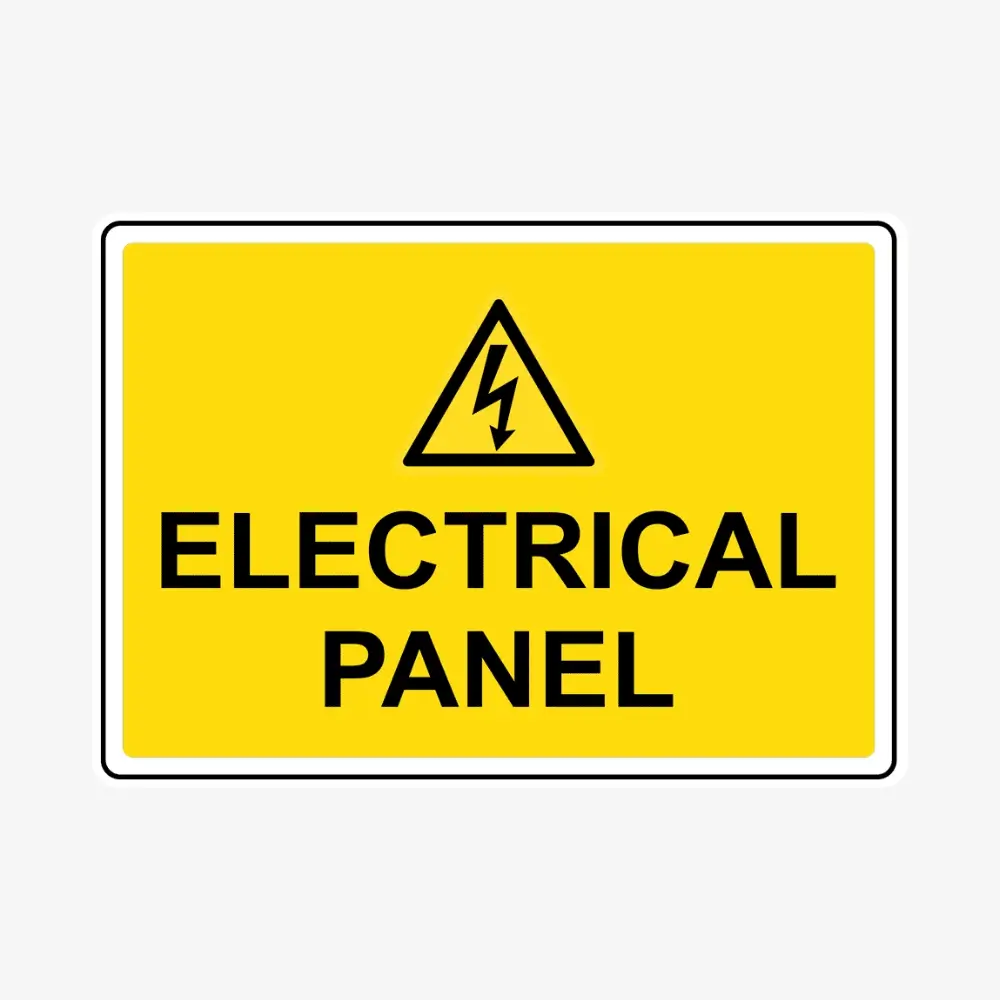
Identifies electrical panels, which house circuit breakers and power distribution systems.
- Where It’s Used: Seen in commercial buildings, industrial sites, homes, and utility rooms.
- Importance: Ensures quick identification of electrical control areas and reminds workers to keep panels clear for easy access in emergencies.
13. Battery Charging Area Sign
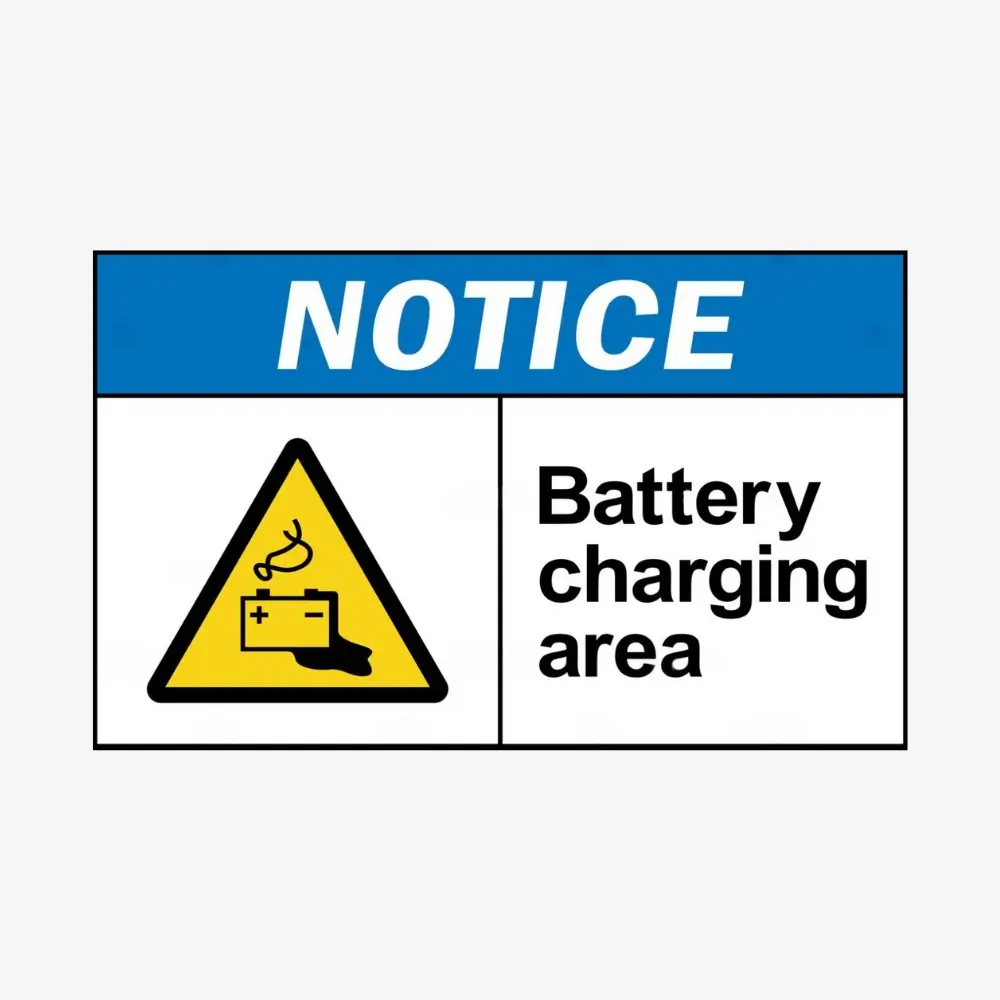
Indicates a designated area for charging lead-acid or lithium-ion batteries, commonly used for forklifts, golf carts, and backup power supplies.
- Where It’s Used: Found in warehouses, manufacturing plants, garages, and battery storage rooms.
- Importance: Battery charging can release flammable gases, so the sign warns workers to avoid sparks, flames, or smoking in these areas.
14. Static Sensitive Area Sign
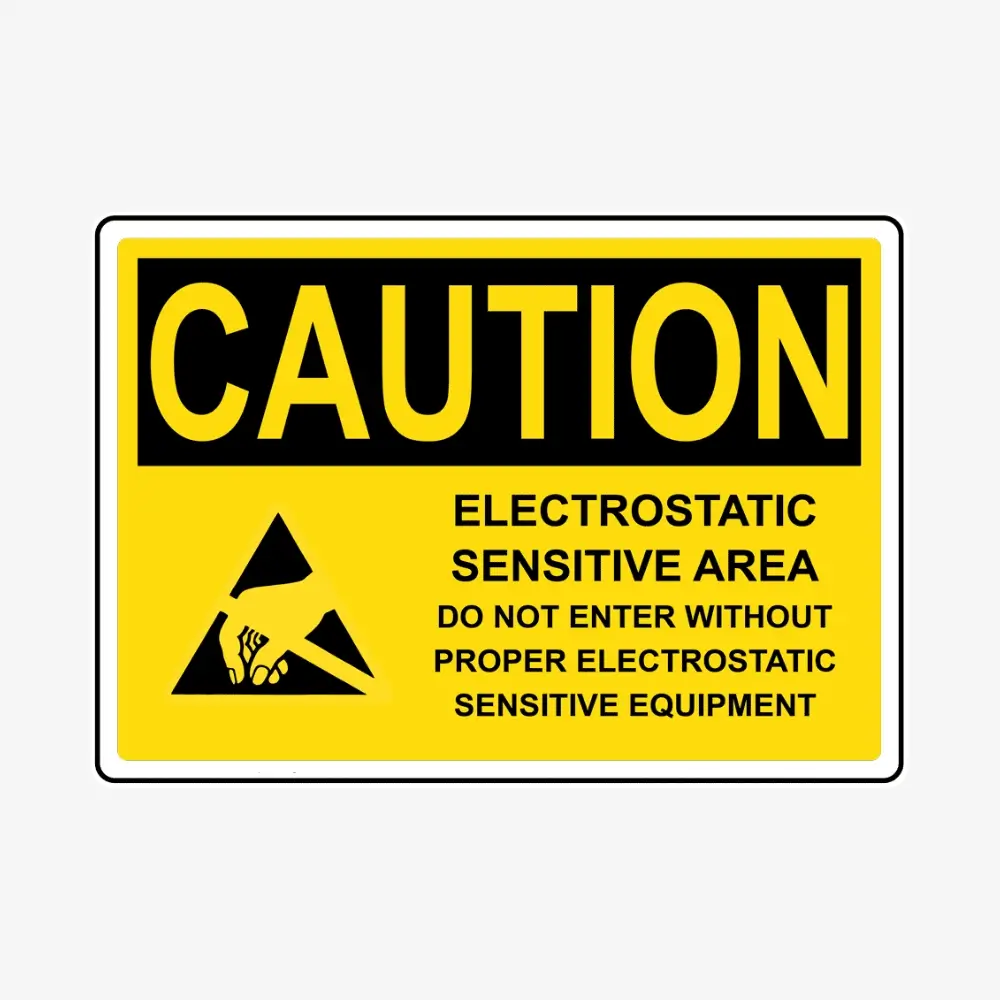
Alerts workers that the area contains static-sensitive equipment, meaning electrostatic discharge (ESD) can damage electronic components.
- Where It’s Used: Found in electronics manufacturing, clean rooms, semiconductor labs, and server rooms.
- Importance: Prevents damage to sensitive devices by reminding personnel to use anti-static wristbands, mats, or footwear.
15. Eye Protection Required Sign
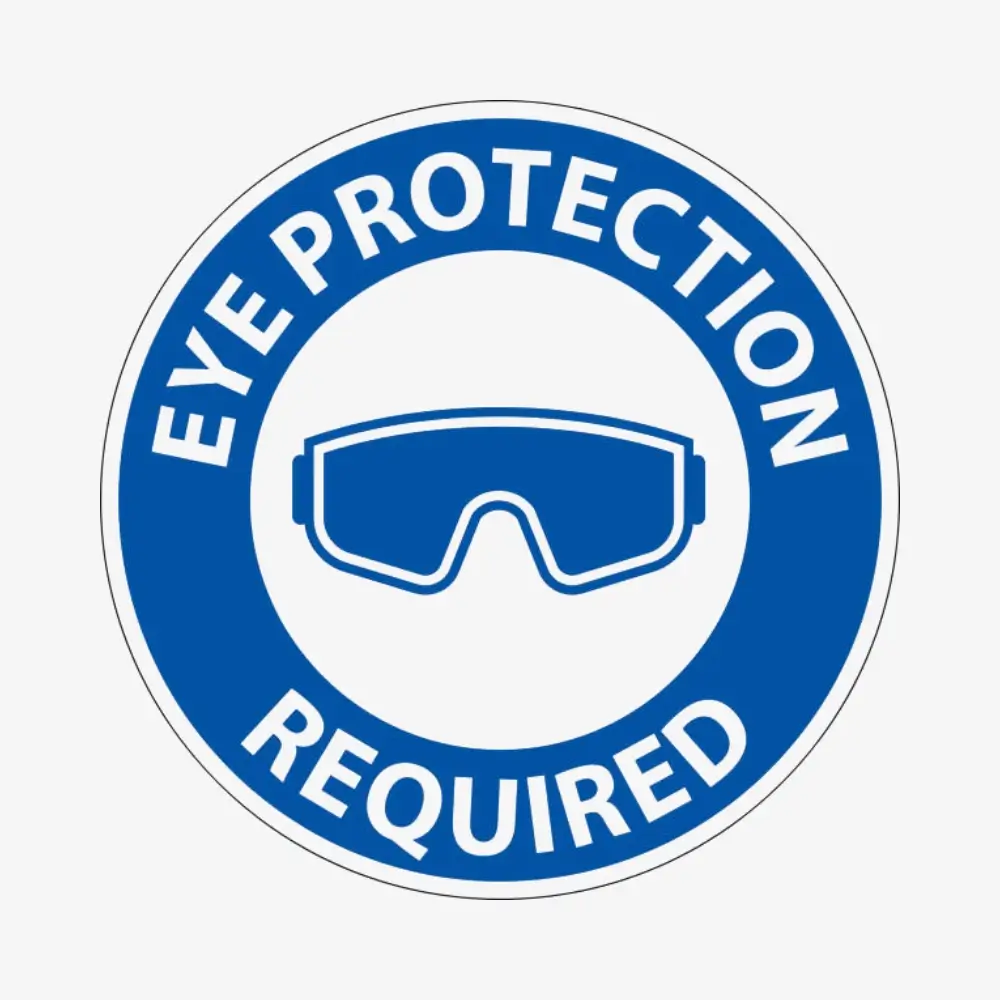
Instructs individuals to wear safety glasses or goggles to protect their eyes from flying debris, sparks, or chemicals.
- Where It’s Used: Common in electrical workshops, welding stations, battery charging areas, and industrial sites.
- Importance: Protects workers from eye injuries due to sparks, dust, or arc flash radiation.
16. Danger: Overhead Power Lines Sign

Warns individuals about the presence of high-voltage overhead power lines, which pose a risk of electrocution if contacted directly or indirectly.
- Where It’s Used: Commonly found near construction sites, roads, industrial zones, and utility poles.
- Importance: Prevents accidental contact with overhead power lines, which can result in severe injuries or fatalities. It reminds workers and the public to maintain a safe distance, especially when using tall equipment like cranes, ladders, or scaffolding.
17. Caution: Underground Cables Sign
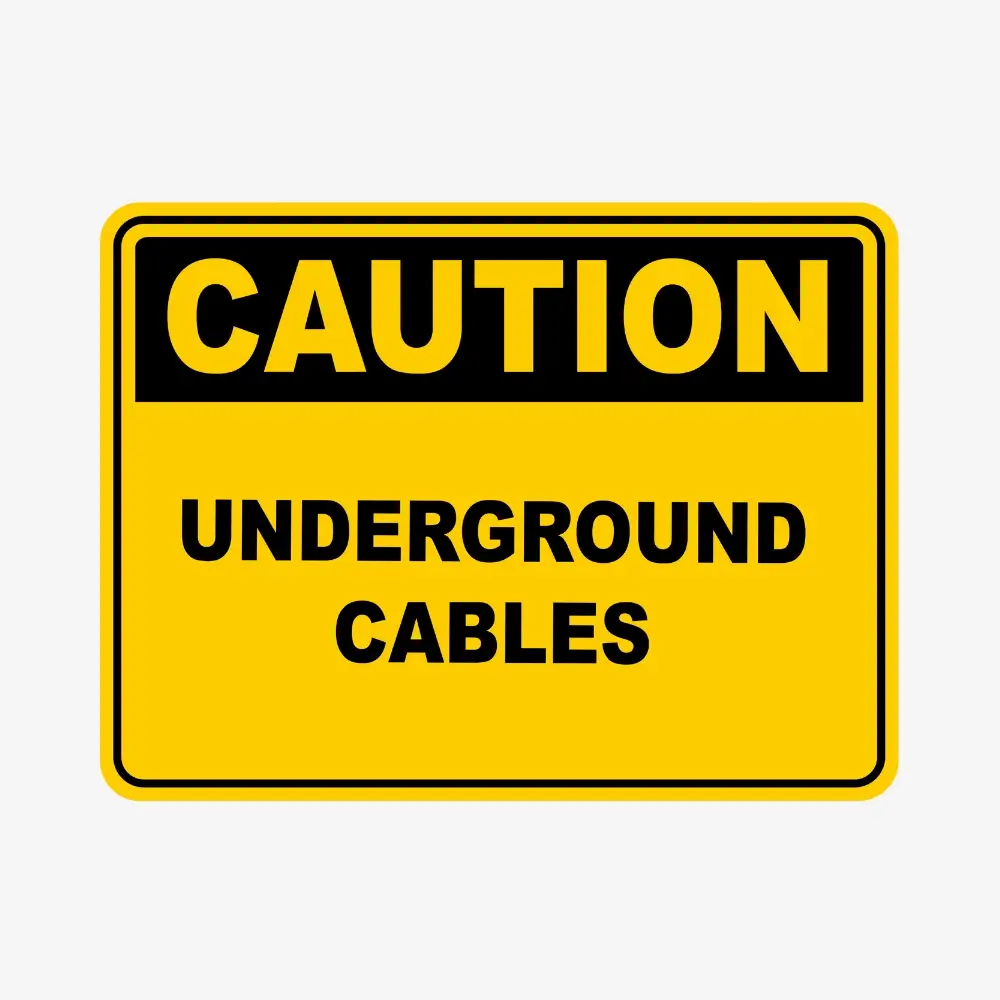
This sign warns of buried electrical cables beneath the ground, which can pose serious electrical hazards if disturbed.
- Where It’s Used: Found in construction zones, excavation sites, and outdoor electrical installations.
- Importance: Prevents accidental cable damage that could result in power outages, electrocution, or explosions. Workers should call for cable location services before digging.
18. Electrical Work In Progress Sign
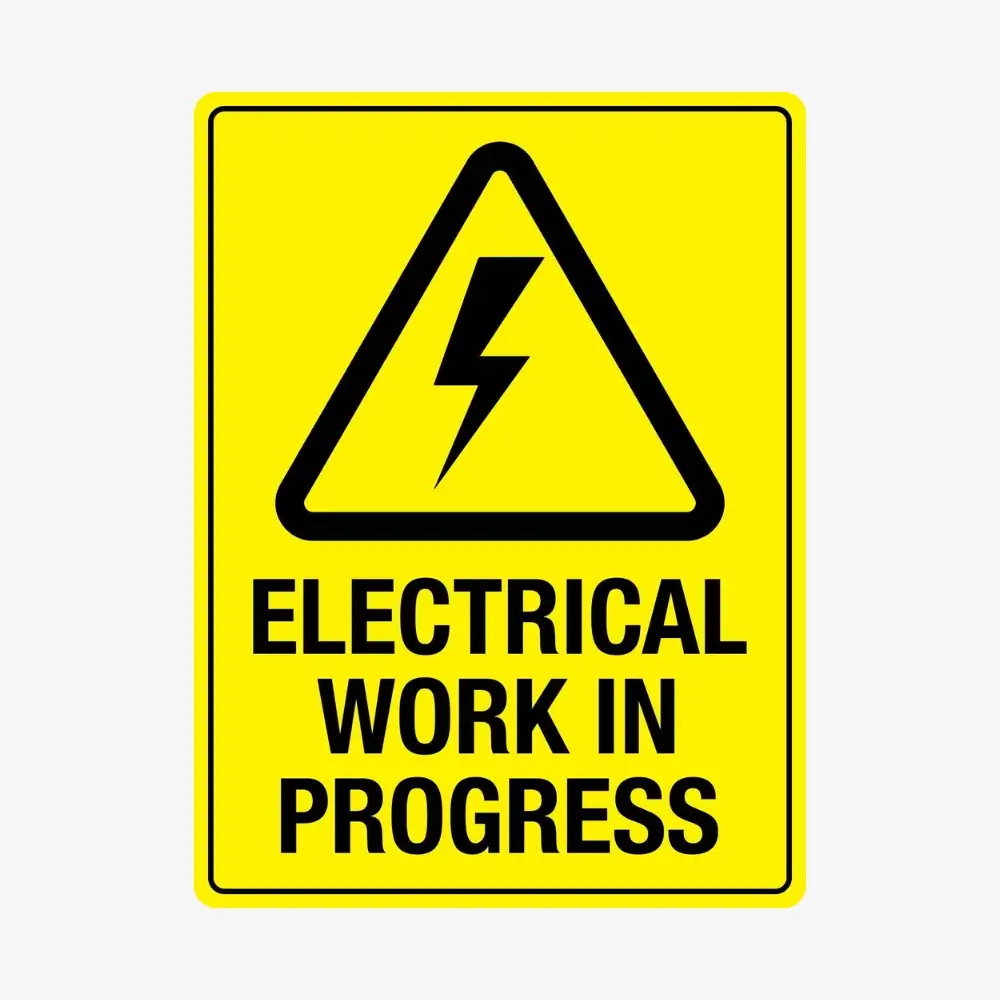
Alerts people that live electrical work is currently taking place and to avoid the area unless authorized.
- Where It’s Used: Commonly seen at construction sites, electrical maintenance areas, and repair zones.
- Importance: Prevents unauthorized entry and accidental contact with live circuits, reducing the risk of electric shock.
19. Risk of Electrical Shock Vertical Sign
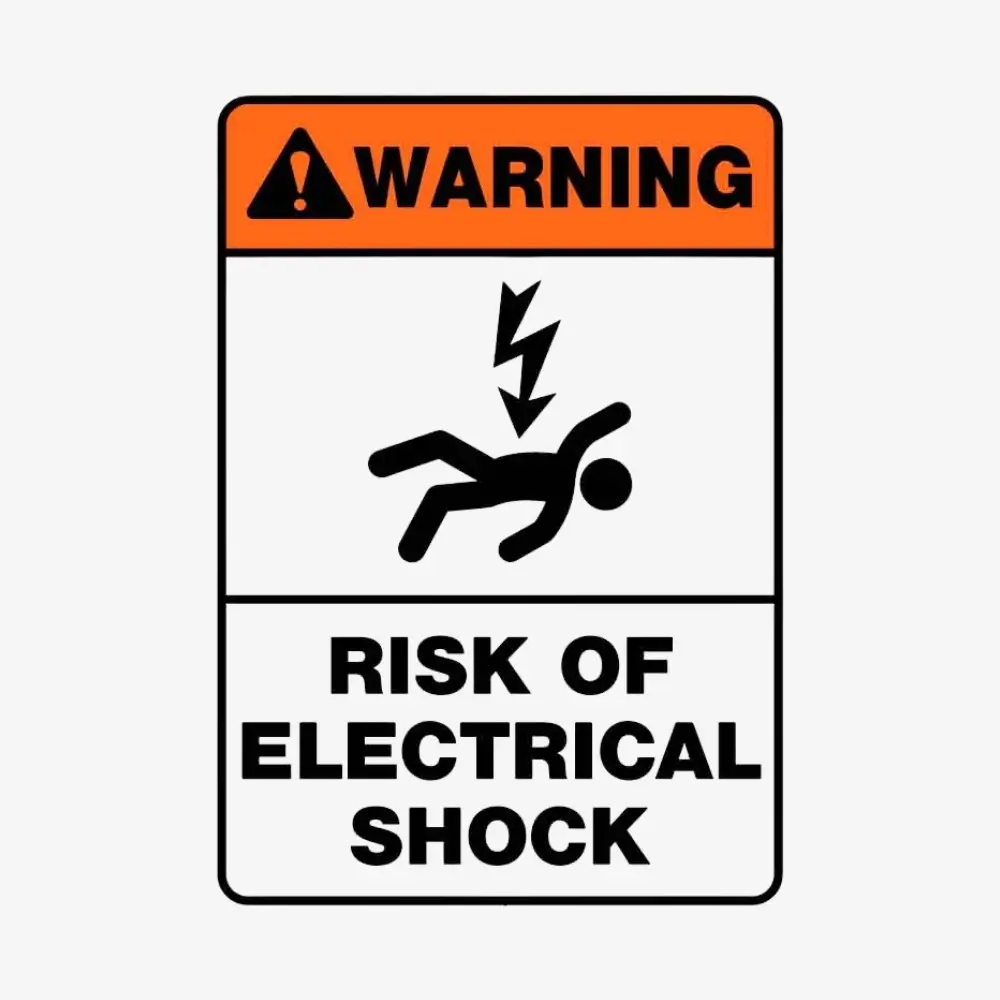
This sign is a vertically aligned warning about potential electrical shock hazards in the area.
- Where It’s Used: Found in electrical rooms, control panels, industrial facilities, and maintenance areas.
- Importance: Reminds workers and visitors to exercise caution, especially if working near exposed wires or live electrical components.
20. Notic: Arc Flash Hazard Sign

Warns of potential arc flash incidents, which are dangerous electrical explosions that can cause severe burns, blindness, and even fatalities.
- Where It’s Used: Found near high-voltage switchgear, circuit breakers, electrical cabinets, and power substations.
- Importance: Alerts workers to wear proper Personal Protective Equipment (PPE) such as arc-rated clothing and face shields before working on electrical panels.
21. No Digging Sign
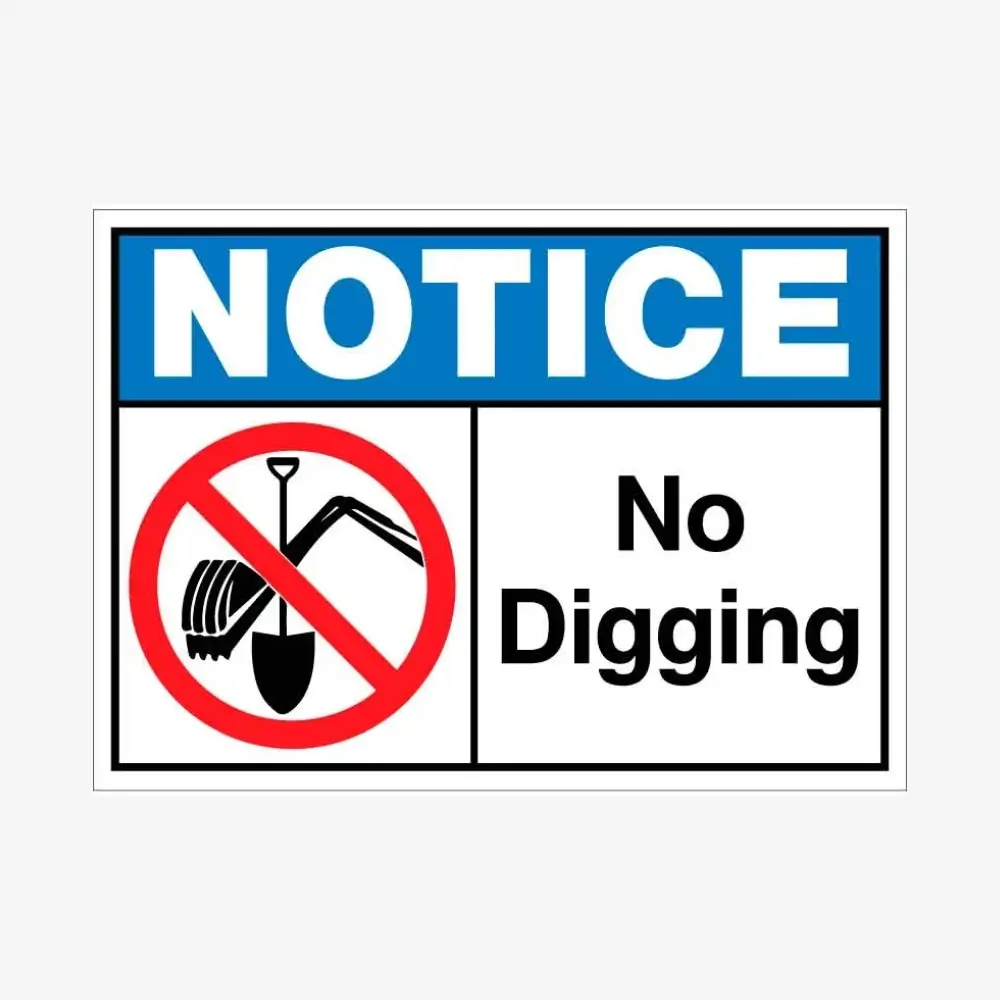
Prohibits digging in areas where buried electrical cables, gas lines, or water pipes exist.
- Where It’s Used: Common in utility easements, construction sites, and roadways where underground infrastructure is present.
- Importance: Prevents accidental electrical cable damage, which could lead to power outages, fires, or electrocution.
22. Danger: Electric Fence Sign
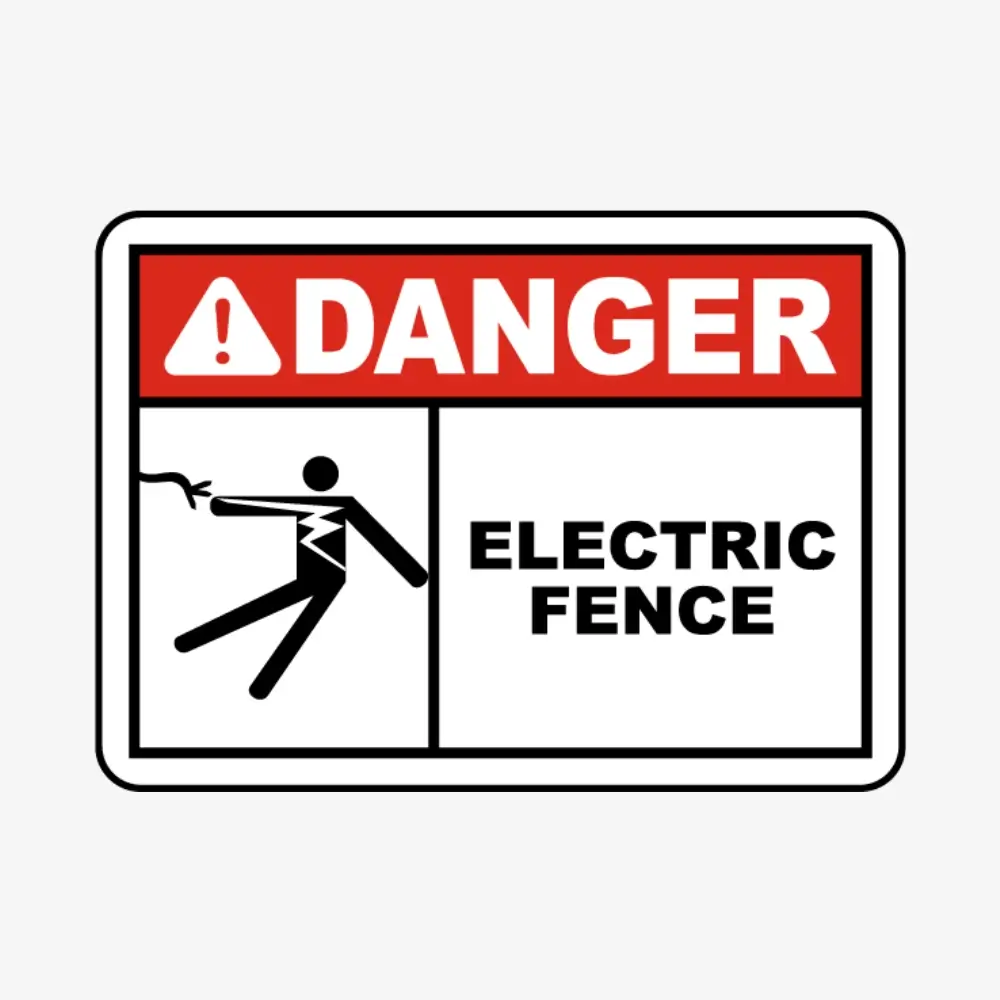
Indicates the presence of an electric fence, which delivers a shock if touched.
- Where It’s Used: Found on farms, security perimeters, and restricted areas.
- Importance: Prevents accidental contact with electric fences, which can cause painful shocks or injuries.
23. This Equipment Is Powered By More Than One Source Sign

Warns that the equipment has multiple power sources, meaning turning off one switch may not fully de-energize it.
- Where It’s Used: Found on industrial machines, backup power systems, and large electrical installations.
- Importance: Prevents accidents by reminding technicians to disconnect all power sources before working on the equipment.
24. To Be Opened By Qualified Electricians Only Sign

Restricts access to electrical panels and enclosures to licensed or qualified electricians only.
- Where It’s Used: Found on electrical control cabinets, transformers, and industrial power units.
- Importance: Prevents unauthorized individuals from opening dangerous electrical equipment, reducing the risk of shock, burns, or short circuits.
25. Caution: Unplug Electrical Supply Label – Turn Off And Unplug Before Opening Sign

Instructs users to turn off and unplug electrical devices before opening them for maintenance or servicing.
- Where It’s Used: Found on computers, industrial machines, power tools, and home appliances.
- Importance: Prevents electrical shocks by ensuring the power is fully disconnected before accessing internal components.
Conclusion
Electrical safety is a crucial aspect of any workplace, construction site, or public space where electrical systems are present. The use of standardized electrical warning signs helps prevent accidents, ensures regulatory compliance, and promotes awareness of potential hazards.
By understanding the meanings of these 25 common electrical signs, workers and individuals can take appropriate precautions, use the necessary protective equipment, and follow safety protocols to reduce the risk of shocks, burns, electrocution, or fires.
Whether you are a professional electrician, a facility manager, or simply someone who works near electrical equipment, being aware of these signs can make a significant difference in preventing accidents and maintaining a safe environment. Always respect electrical warnings, follow safety guidelines, and prioritize caution when dealing with electrical systems. Your awareness and adherence to these signs could save lives.

